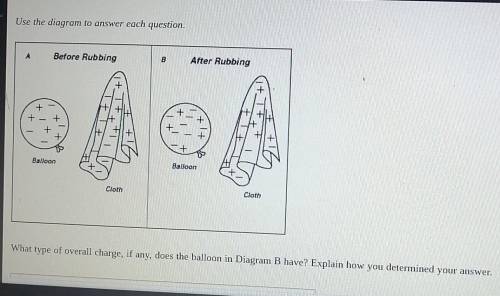

Answers: 3


Other questions on the subject: Physics

Physics, 22.06.2019 18:00, kachinafenton9098
Asynthetic fiber used in manufacturing carpet has tensile strength that is normally distributed with mean 75.5 psi and standard deviation 3.5 psi. how is the standard deviation of the sample mean changed when the sample size is increased from n equals 8 to n equals 47
Answers: 2

Physics, 22.06.2019 19:30, rprest00
Amass m = 74 kg slides on a frictionless track that has a drop, followed by a loop-the-loop with radius r = 18.4 m and finally a flat straight section at the same height as the center of the loop (18.4 m off the ground). since the mass would not make it around the loop if released from the height of the top of the loop (do you know why? ) it must be released above the top of the loop-the-loop height. (assume the mass never leaves the smooth track at any point on its path.) 1. what is the minimum speed the block must have at the top of the loop to make it around the loop-the-loop without leaving the track? 2. what height above the ground must the mass begin to make it around the loop-the-loop? 3. if the mass has just enough speed to make it around the loop without leaving the track, what will its speed be at the bottom of the loop? 4. if the mass has just enough speed to make it around the loop without leaving the track, what is its speed at the final flat level (18.4 m off the ground)? 5. now a spring with spring constant k = 15600 n/m is used on the final flat surface to stop the mass. how far does the spring compress?
Answers: 3

Physics, 22.06.2019 23:40, Demondevilg
Along wire of diameter 1 mm is submerged in an oil bath of temperature ∞ 31°c. the wire has an electrical resistance per unit length of 0.01 ω/m. if a current of 103 a flows through the wire and the convection coefficient is 500 w/m2·k, what is the steady-state temperature of the wire? from the time the current is applied, how long does it take for the wire to reach a temperature that is within 1°c of the steady-state value? the properties of the wire are 8000 kg/m3, 500 j/kg·k, and 20 w/m·k.
Answers: 3

Physics, 23.06.2019 09:30, lizzyhearts
A"car"initially"at"rest"experiences "a" constant"acceleration"along"a"horiz ontal" road."the"position"of"the"car"at"se veral" successive"equal"time"intervals"is" illustrated"here. between"which"adjacent"positions"is "the" change"in"kinetic"energy"of"the"car "the" greatest
Answers: 3
You know the right answer?
What type of overall charge, if any, does the balloon in Diagram B have? Explain how you determined...
Questions in other subjects:


Health, 29.10.2020 23:40


Chemistry, 29.10.2020 23:40

Mathematics, 29.10.2020 23:40

Mathematics, 29.10.2020 23:40

Social Studies, 29.10.2020 23:40

Arts, 29.10.2020 23:40

Mathematics, 29.10.2020 23:40





